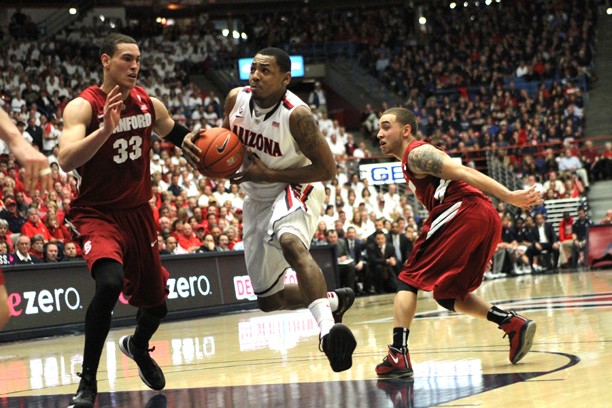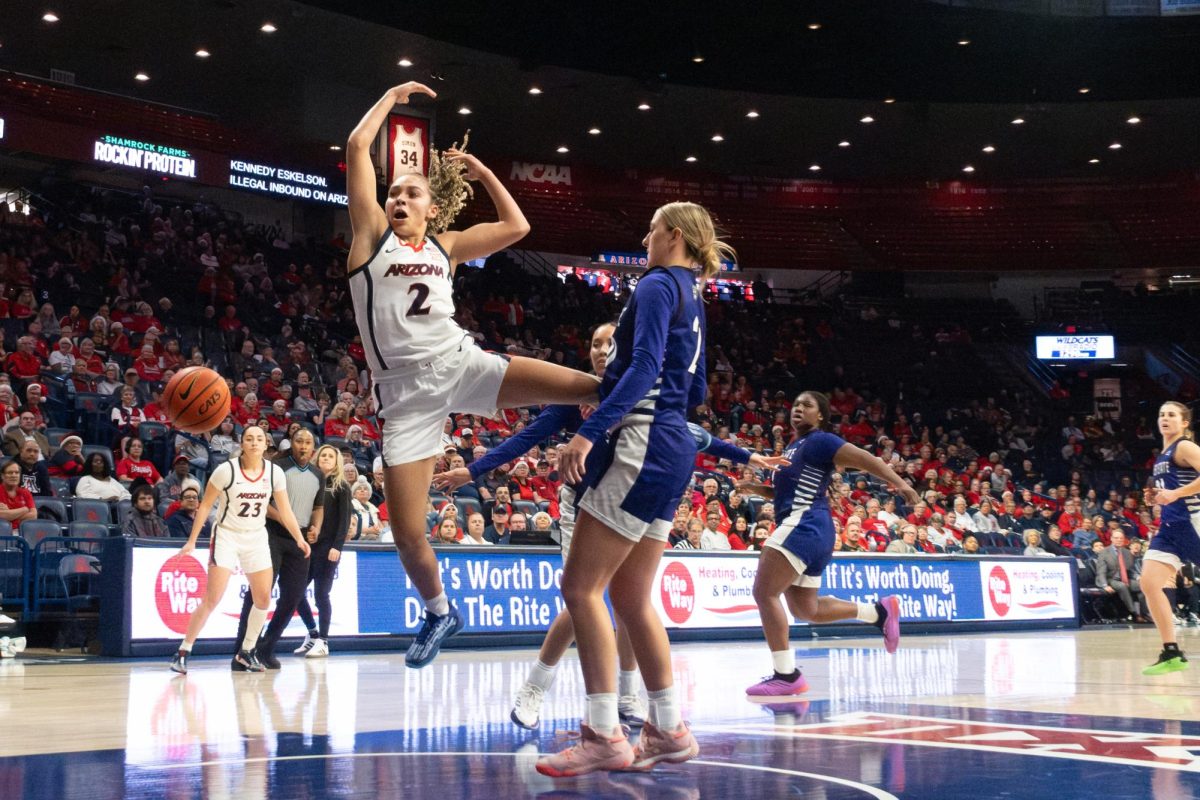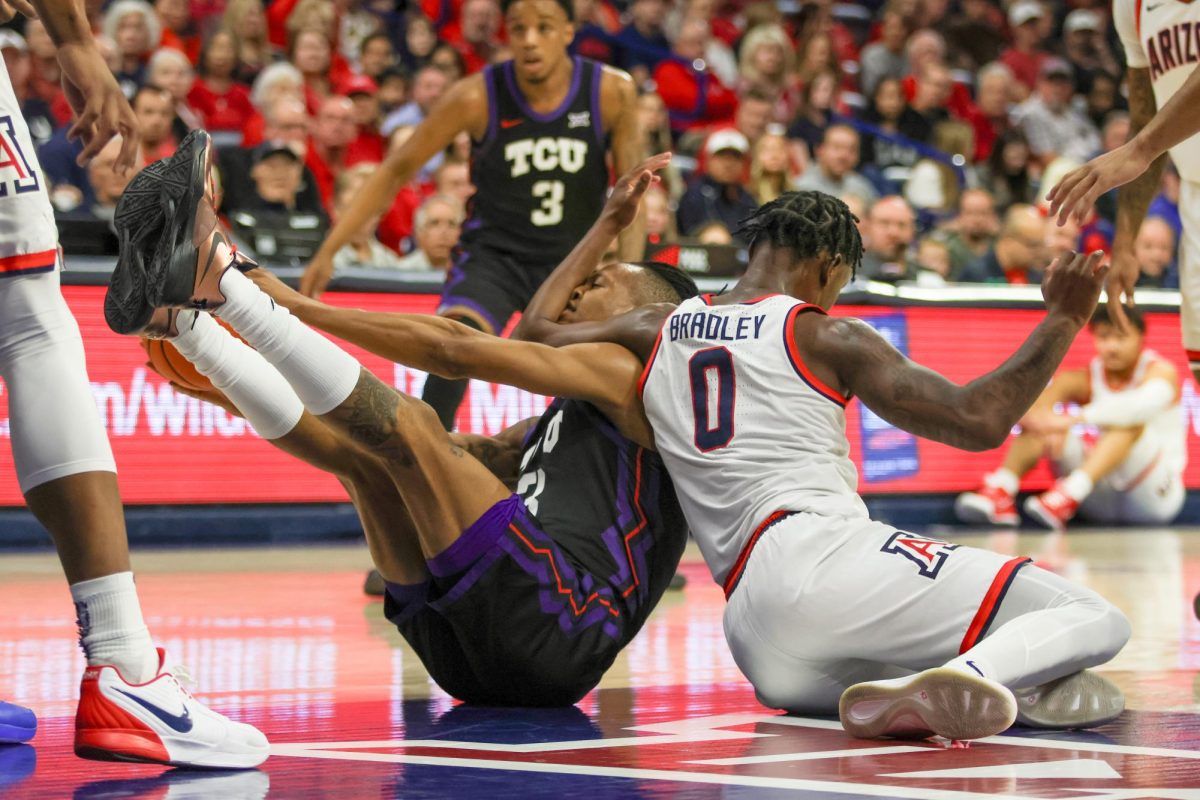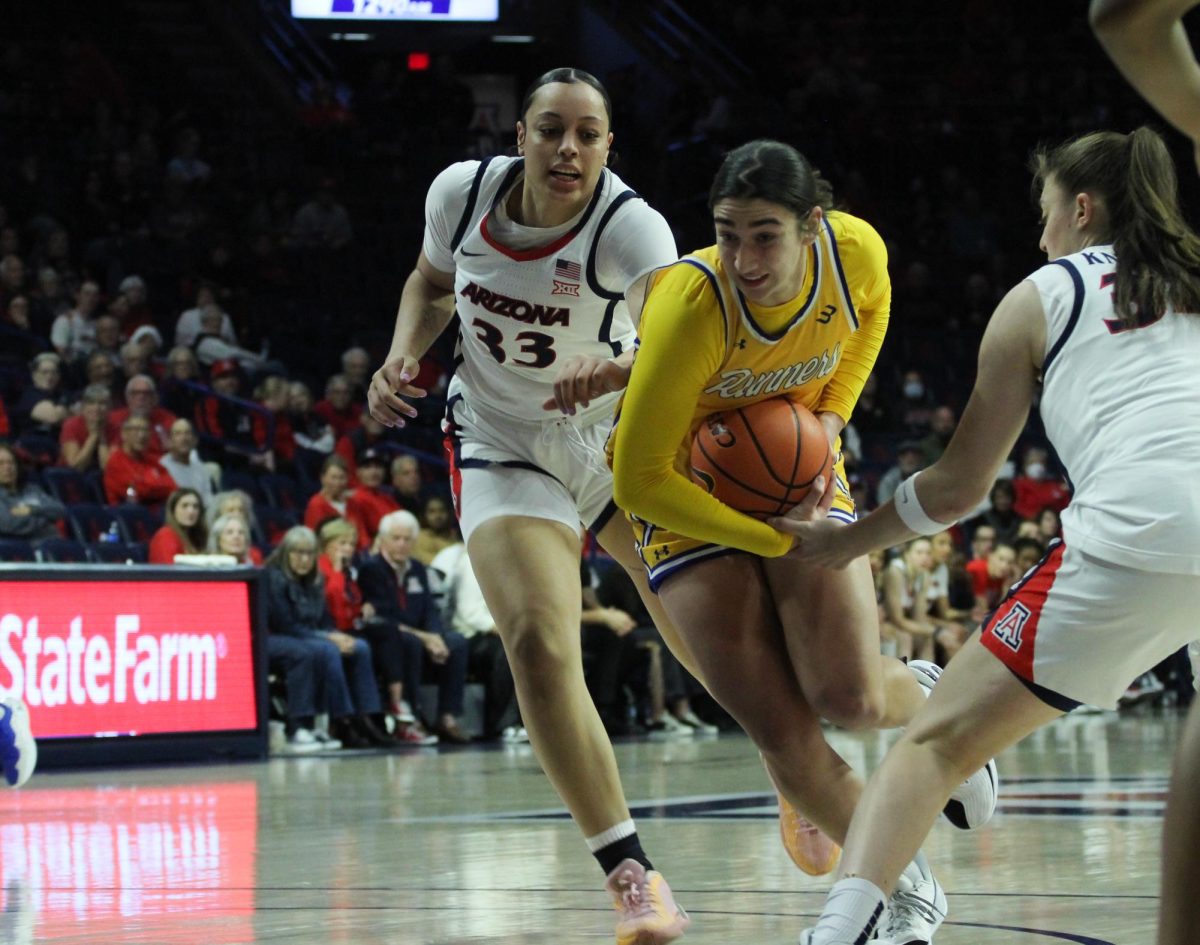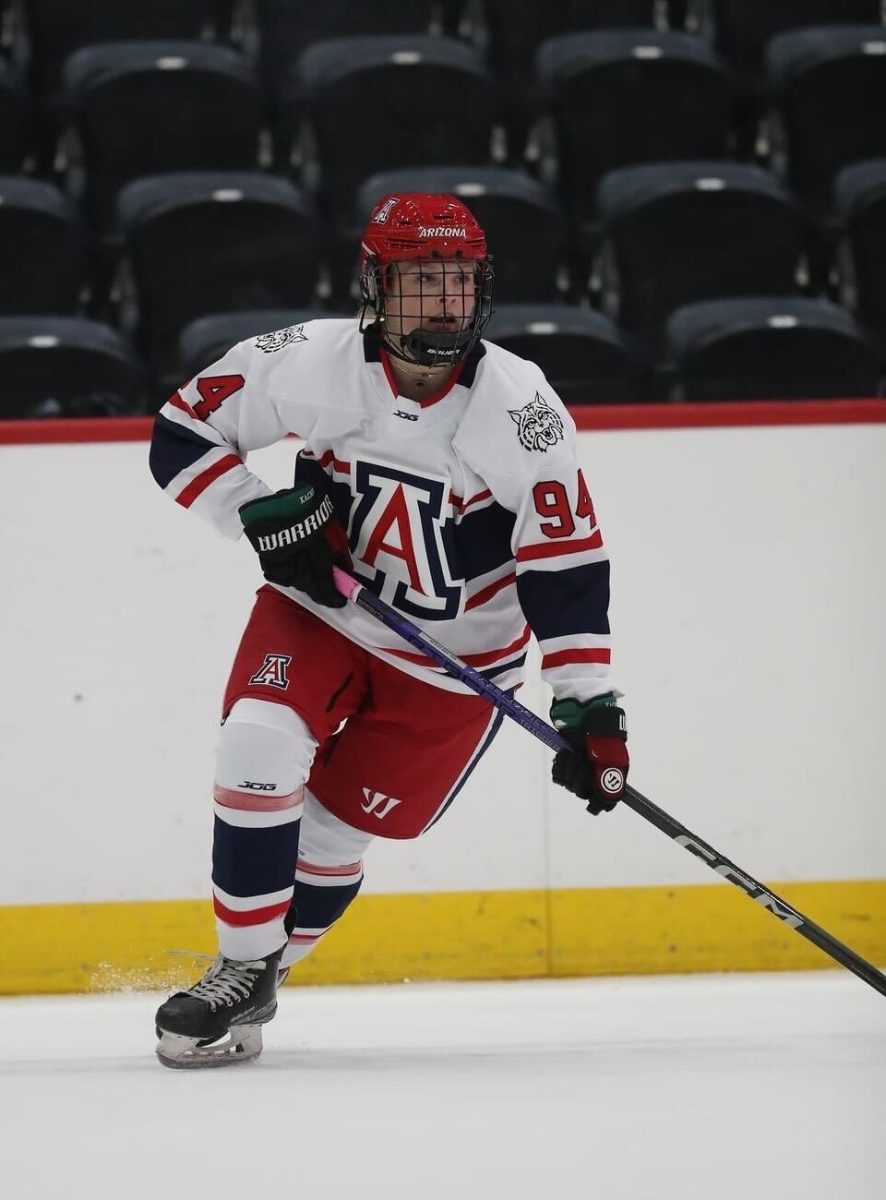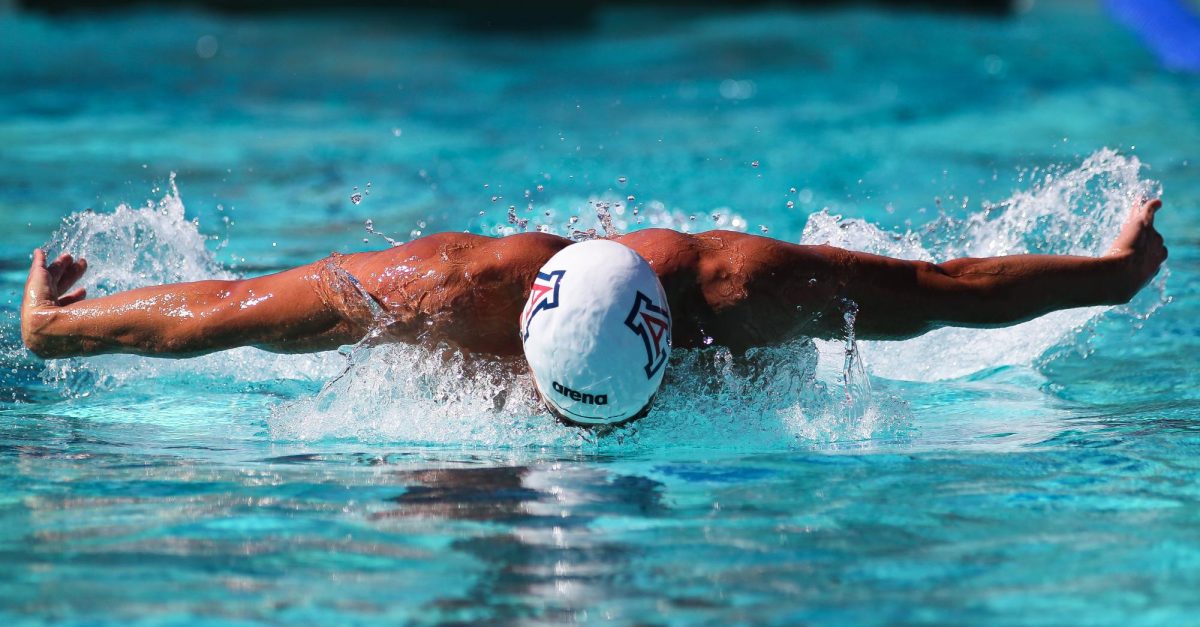Without Mark Lyons, Arizona would not be 20-2.
The Xavier transfer has brought a scoring prowess the Wildcats lacked last year, and his play in crunch time has proven invaluable in more than a few games.
But as a point guard, in its purest definition, Lyons has struggled.
He turns the ball over too much and often settles for contested jumpers.
He is more of a combo guard, but he’s asked to run the point for Arizona.
“It’s not easy to become a point guard,” Miller said — especially with the weight of “Point Guard U” on his shoulders.
So, throughout the season, Miller has met with Lyons in his office to discuss Lyons’ role, his performance and what he needs to do to get better.
Miller told Lyons to make more bounce passes below the free throw line leading up to Wednesday’s 73-66 win against Stanford.
With 4:08 left in the game, Lyons did just that. On a 2-on-1 fast break, he kicked it to Angelo Chol, who slammed it home to put the Wildcats ahead 56-54, and they never looked back.
That was one of six assists of the night for Lyons, and he scored a season-high 25 points. But his committing just two turnovers is what made it his best performance of the season.
“It was his night,” said Stanford forward Josh Huestis. “He was running their team really well; he had a good night, and he made every other player play better. They’re going to be a tough team to stop when he plays like that.”
From Miller’s perspective, it’s about time.
“I talked to him 107 times,” Miller joked. “I wrote it on a piece of paper [Wednesday]. On the 107th meeting, it clicked. I don’t know what I was wearing or how I looked, but man we had it going together.”
Lyons’ toughness has never been questioned.
In the second half against Stanford, Lyons was elbowed in the throat. He went to the bench for a few minutes and was visibly coughing and in pain.
Earlier in the game, he was hit in the stomach on a ball screen.
Lyons came back, though, and helped Arizona to its 20th win of the season.
The Wildcats haven’t started a season this well, winning 20 of 22 games, since a Jason Gardner-led squad started 25-2.
If Arizona is going to get to that point, and deep into the NCAA tournament, the Wildcats will need Lyons to perform more like he did against Stanford and less like he did against UCLA, where he had five turnovers and zero assists.
“I was facilitating, and that was the biggest thing,” Lyons said.
After the game, Miller wondered if Lyons could put together consecutive games where he was more of a facilitator for Arizona, and less for the other team. Lyons has yet to go two consecutive games with more assists than turnovers. He’s only had more dimes on eight occasions, when Lyons’ averages jumped to 16.9 points, 4.9 assists and 1.6 turnovers per game.
On the season, he gets 15.4 points, 3 assists and 2.9 turnovers per game. More specifically, when he has more turnovers than assists, he gets 15 points, 1.7 assists and 3.6 turnovers per game.
Those numbers aren’t astronomically different, but the turnover differential makes a difference.
For example, against UCLA, four of his five turnovers led to eight points for the Bruins, and the other led to two free throws.
“Without his scoring punch we’d be nowhere near where we are,” Miller said. “But it makes the game hard sometimes if he turns it over the way he does; we tried to really map out a plan.”
That means he needs to make the bounce passes, avoid contested 3-pointers in the first four minutes, take higher percentage long-range jumpers, improve as a defender and “to make people better, to run the team and to take more pride in the things that don’t show up on the stat sheet,” Miller said.
“That is a great sign of things to come if he can stay in that mode.”
— Zack Rosenblatt is a Journalism senior. He can be reached at sports@wildcat.arizona.edu or on Twitter via @ZackBlatt.



